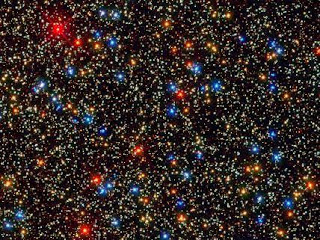Stars in the Universe? Which Is Greater, the Number of Sand Grains in the world's deserts and beaches, Or stars in the universe?
Here's an old question— which are there more grains of sand in the world's deserts and beaches, or stars in the Universe? American astrophysicist Carl Edward Sagan had told that there are much more and more stars in the universe than the sand grains in the world's deserts and beaches.
Is he right in his claim? Can the stars in the Universe be counted?
Obviously, grains and stars can't be counted, but you can estimate. Being well-versed in all these things, Gerry Gilmore, professor of astronomy at Cambridge University, tried to calculate the number of stars in our galaxy. He said about 2 trillion stars are there in just our galaxy considering the distance, size and the light they reflect as the factors. Rather than counting the stars one by one, count all the galaxies in one small region of the universe close to the Earth. By measuring the brightness of each galaxy, estimate how many stars it contained and extrapolate for the entire night sky. The number of galaxies in the universe can be guestimated on the basis of Hubble's law; a certain way the universe is expanding.
About one trillion galaxies are there in the universe each containing two trillion stars.
Now if we multiply these two numbers we get 20,000,000,000,000,000,000,000, i.e. 2 followed by 22 zeroes
So, how much is the sand on all the beaches, everywhere, on this earth? We’d need to estimate the average volume of a sandy beach and the average amount of the world’s coastlines which are beaches.
According to Open Street map; a plan in which data is shared by all the countries throughout the world including America, UK, and Canada, a beach is considered to be 9.1 km long on an average, thus a total of 3 lacs km consist of long sandy beaches. One cubic meter sand contains 10 billion grains. Now to determine the density, it is highly impossible.
But we can assume that most beaches are 50 meters wide and about 25 meters deep. Then multiply all the beaches and deserts in the world, what we get is a mind-blowing number. It comes to be 3.75 trillion and each cubic meter of a beach, say approximately, consists of 10 billions of grains. Thus multiplying these two enormously large numbers the figure comes out to be 3.75 followed by 21 zeros that is the approximate number of grains of sand on the collective beaches of an entire planet. We can assume 4 followed by 21 zeros.
4000,000,000,000,000,000,00. That's a lot of grains.
Now we compare,
20,000,000,000,000,000,000,000 (20 followed by 21 zeros) stars in the universe and
4,000,000,000,000,000,000,000 (4 followed by 21 zeros) grains of sand on the collective beaches of an entire planet.
This means that Carl Edward Sagan was correct. These are just mathematical estimates and there is no way of confirming this with 100% certainty, but for now that it is at least probably correct.




Comments
Post a Comment